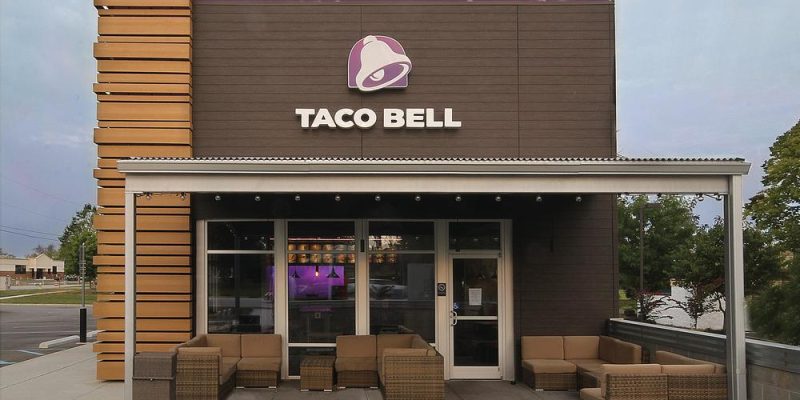Storefront Branding: How to Turn Your Exterior Into a Customer Magnet

In today’s competitive marketplace, your storefront is more than just an entrance—it’s a powerful branding tool. Effective storefront branding not only communicates your brand’s identity but also influences how potential customers perceive your business. Whether you own a boutique, restaurant, or retail chain, your storefront should visually represent your values, style, and professionalism.
According to a FedEx survey, 76% of consumers said they’ve entered a store or business they’ve never visited before based solely on its signs. That’s why storefront branding is a critical component of any local marketing strategy.
What Is Storefront Branding?
Storefront branding refers to the visual identity and messaging presented on the exterior of a business location. It includes everything from signage and colors to window displays and architectural features. The goal is to attract attention, communicate the brand’s personality, and invite people inside.
Key elements include:
- Store name and logo
- Window displays
- Signage and awnings
- Lighting
- Color schemes
- Exterior decor (e.g., plants, murals, seasonal themes)
Benefits of Strong Storefront Branding
Increases Brand Visibility
Your storefront is your most visible marketing asset, especially if located in high-traffic areas. Eye-catching and consistent branding helps you stand out from nearby competitors.
Builds First Impressions
Customers form opinions within seconds. A professional and well-branded storefront creates trust, even before someone steps inside.
Drives Foot Traffic
Creative displays, promotions, or signage can turn passersby into customers. Engaging visuals spark curiosity and can boost walk-in traffic significantly.
Reinforces Brand Identity
Storefront branding ensures consistency with your other marketing materials, strengthening your overall brand recognition.
Supports Local SEO
A branded storefront can enhance your local search optimization efforts by improving photos, map listings, and review credibility on platforms like Google Business Profile.
Key Elements of an Effective Storefront Design
Signage That Pops
Use high-contrast, easy-to-read signs that are visible from a distance. Include your logo and brand colors. Make sure your signage is well-lit for visibility during evening hours.
Consistent Color Scheme
Use your brand colors across windows, walls, doors, and trim. Color psychology plays a role in how people feel about your brand—choose tones that reflect your brand personality.
Window Displays with Purpose
Showcase products, seasonal offers, or lifestyle themes. Update regularly to keep the display fresh and relevant. Ensure the display matches the tone of your brand—whether it’s modern, rustic, quirky, or elegant.
Branded Awnings and Fixtures
Awnings, door handles, and even outdoor benches should reflect your brand. Custom awnings with your logo or slogan can enhance both aesthetics and function.
Lighting for Impact
Invest in exterior lighting that highlights signage and creates ambiance. Lighting not only increases visibility but also enhances safety and creates a welcoming atmosphere.
Outdoor Decor
Potted plants, chalkboard signs, murals, and thematic decorations can add personality to your storefront. Make sure they align with your brand message and target audience.
Tips for Optimizing Storefront Branding for Local SEO
- Geotag Photos: Upload high-quality, branded storefront images to your Google Business Profile, making sure they are geotagged for your physical location.
- Use Keywords in Business Description: Include terms like “storefront branding,” “custom retail signage,” or “window display design” to help improve your visibility in local search.
- Encourage Reviews with Visual Mentions: Ask customers to mention your storefront in their Google or Yelp reviews—this builds trust and reinforces brand visibility.
- Add Structured Data: Use Local Business schema to mark up your store name, address, photos, and branding features for search engine crawlers.
Common Mistakes to Avoid in Storefront Branding
- Inconsistent Design: Don’t mix styles that clash with your brand’s online presence or interior design.
- Overcrowding: Avoid cluttering the window or signage. Keep messaging simple and focused.
- Neglecting Maintenance: Peeling paint, broken signs, or dim lighting can damage your brand reputation.
- Ignoring the Competition: Stand out by researching nearby businesses and creating a distinctive visual identity.
Industries That Benefit Most from Storefront Branding
- Retail stores: Fashion boutiques, tech shops, toy stores
- Restaurants and cafes: Coffee shops, bakeries, fast-casual chains
- Service providers: Salons, fitness studios, wellness centers
- Professional offices: Law firms, real estate agencies, consultants
Whether you’re on a busy downtown strip or in a suburban plaza, a strong storefront is a silent salesperson that works 24/7.
How to Get Started with Storefront Branding
- Audit Your Current Front: Take photos and analyze what works and what doesn’t.
- Define Your Brand Personality: Is your brand playful, luxurious, vintage, or minimalist?
- Consult with a Designer: Graphic designers or branding consultants can help create a cohesive look.
- Invest in Quality Materials: Use weatherproof signage, professional window graphics, and durable lighting fixtures.
- Measure and Adjust: Track foot traffic, sales lift, and customer feedback to refine your branding over time.
Conclusion
Storefront branding is not just a design decision—it’s a strategic marketing tool. It affects how people perceive your business, how many stop by, and how well your brand is remembered. By aligning your storefront with your brand identity and optimizing it for visibility, you can turn heads, boost foot traffic, and grow your customer base.
Whether you’re launching a new store or upgrading an existing location, now is the perfect time to invest in storefront branding that drives results.
Here are 5 SEO-optimized FAQs for the topic “storefront branding” that can enhance your article or landing page:
FAQs
1. What is storefront branding and why is it important?
Storefront branding refers to the visual and design elements on the exterior of a physical business location that represent the brand. It’s important because it creates first impressions, attracts foot traffic, and reinforces brand identity in a competitive marketplace.
2. How can I improve my store’s branding on a budget?
Start with small changes like upgrading signage, refreshing your window displays, and using consistent colors. DIY elements like chalkboard signs or seasonal décor can also make a big impact without high costs.
3. What should be included in effective storefront branding?
Effective storefront branding includes clear signage, cohesive color schemes, eye-catching window displays, branded awnings, quality lighting, and exterior elements that align with your brand’s tone and audience.
4. How does storefront branding help with local SEO?
A well-branded storefront improves your visibility on Google Maps and search results by enhancing your profile with relevant photos, reviews, and geotagged content, making it easier for local customers to find and trust your business.
5. How often should I update my storefront branding?
You should refresh your storefront branding seasonally or during major promotions. Window displays and signage should be reviewed monthly to keep them clean, relevant, and engaging.
Also read: Miramar Bobcat San Diego CA: Your Local Partner for Heavy Equipment Sales and Rentals











